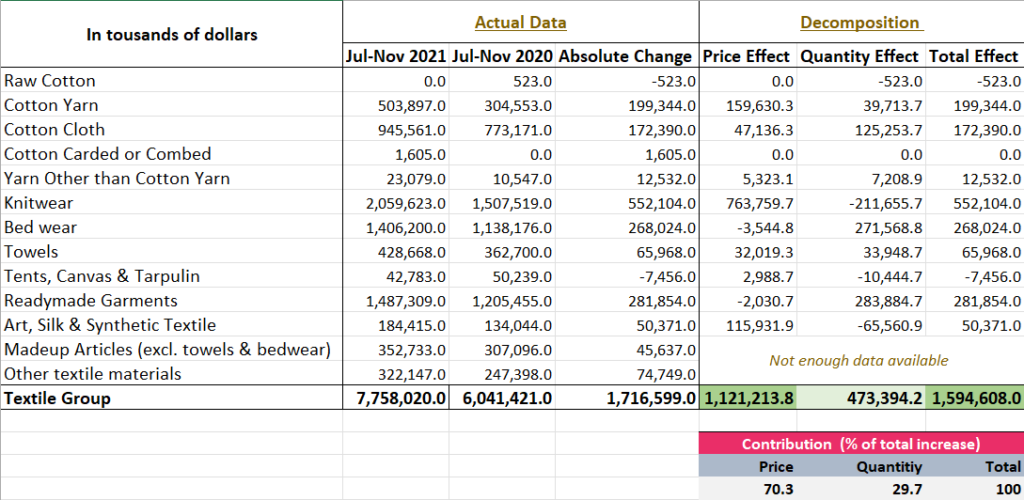EAG analysis shows a rise in exports due to international demand and devaluation
- December 31, 2021

The EAG in its vision document noted that the policy landscape in Pakistan has historically been dominated by sectoral policies which continue to prevent economic resources from moving towards more productive activities. Importantly, these policies take the form of protection from international competition and poorly targeted subsidies to, for example, the ‘export’ sectors. The failure of these policies can be judged from looking at Pakistan’s export basket which continues to comprise of low value-added and less sophisticated products.
However, more recently, the sharp increase in the dollar value of exports has created an erroneous perception that these policies are finally delivering. For example, the policymakers have interpreted the year-on-year increase of 28% in the dollar value of textile exports during the first four months of the Fiscal Year 2022 as evidence that existing subsidies such as the preferential energy tariff have been successful in meeting their intended objective.
On a careful look, and contrary to the perception of policymakers, the EAG finds that the increase in the dollar value of exports has little to do with these policies. One of the EAG members, Ahmed Pirzada, has used the publicly available data on textile exports to decompose the increase in dollar value of textile exports into price and quantity effects. The analysis shows that, out of the $1.7 billion increase in textile exports during July-Nov 2021, more than two-third is simply due to an increase in international prices (see Figure 1). In other words, had international prices remained the same as last year, the dollar value of textile exports would have increased by only 7.8%.
The EAG has gone further and also analysed the key factors driving the increase in quantity of exports in recent years. To do so, the EAG has used the Bayesian Structural VAR model from the 2019 paper by Ahmed Pirzada and estimated it using quarterly data for the period between Jul-1994 and Jun-21. The paper is titled “Do exchange rate shocks matter for Pakistan’s export performance?” and is publicly available here. Figure 2 plots key results from this exercise.

Our results show that most of the slowdown in quantity of exports between 2015-18 and the subsequent increase since 2018 is explained by changes in real effective exchange rate (red bars). Specifically, the favourable exchange rate regime has not only reversed the negative effect of overvalued exchange rate between 2015-18, but has also helped in stimulating these further by about 5-10% relative to the trend.
Changes in world economic conditions have also played an important role in driving quantum of exports. For example, the drop in world economic activity during Covid led to a 25% drop in exports relative to the trend (blue bars). However, the sharp recovery in world economic activity since then has had a positive effect on Pakistan’s export performance during most of Fiscal Year 2021.
These results call into question the role of subsidies (in their current form) that the government has extended to these sectors in an attempt to stimulate exports. Since almost all of the increase in quantum of exports in recent years is explained by favourable exchange rate and, more recently, world demand, the subsidies provided by the government have had a limited effect, if at all, on export volumes.
In light of this evidence, the EAG calls on the government to review the existing incentives it has extended to these sectors at the expense of the broader welfare of the society. The EAG also draws government’s attention to its vision document and emphasises the need for the government to review its sectoral policies with the aim to move away from picking winners towards rewarding innovators, improving land-use within cities, negotiating market access to international markets, mainstreaming vocational training, and simplifying the tax code.
The Economic Advisory Group is an independent group of individuals from economics, policy and the private sector that deliberates regularly on economic developments and shares its views with the government and the public. It is supported by PRIME, an independent think tank.
For media inquiries, contact info@eag.org.pk or visit www.eag.org.pk.